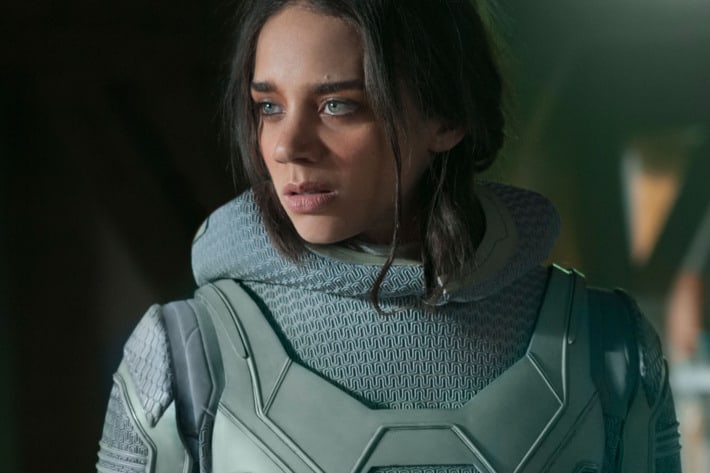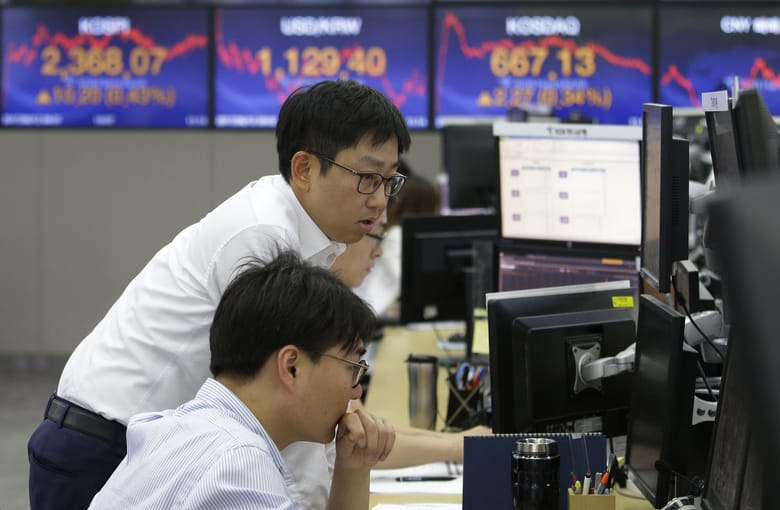
From a certain perspective, it’s almost like visual effects supervisor Stephane Ceretti was destined to work on the Ant-Man franchise. The first film and its sequel, Ant-Man and the Wasp, both deal heavily with the so-called Quantum Realm, a subatomic environment in which the conventional laws of physics go out the window and the local science borders on magic. Ceretti was intimately involved in crafting the look and feel of the Quantum Realm and the other pseudo-science that powers Ant-Man and the Wasp’s characters, and he had something crucial that the top-line talent couldn’t boast: a history with quantum mechanics.
While studying at a university in his French hometown of Lyon, the veteran effects whiz was heavily exposed to teaching about the ins and outs of quantum physics. Later, he went on to study film, but his prior academic experience has served him well at the movies. “When you do these kinds of films and do these effects, it’s important to understand, a little bit, how physics works,” Ceretti tells Vulture. “Because there is so much that we do that is simulation and re-creation of the real word, understanding physics and how things work is always a plus, I think.”
Take, for example, the villain of Ant-Man and the Wasp, Ghost, played by Hannah John-Kamen. As a result of a childhood accident, she is blessed and cursed with a unique set of superpowers: She can “phase” through solid objects and often appears as though her body parts are in multiple places at once. While moving, she leaves after-images of where she was that look, well, ghostly. Ceretti says his background in quantum mechanics helped him come up with that approach. “I knew that, in quantum mechanics, a particle can be in multiple places at the same time,” he says. “So that is when we started to explore, as a visual effects concept, how to show this, and we played around with time-manipulation and space-manipulation and multiple actions taking place at the same time. That was a collaboration between the script writers and the stunt people and [director] Peyton [Reed] and myself, and we were really just trying to find cool and interesting ways to play with it.”
But how to pull such a thing off? Ceretti says there was no single method for it. “It’s a mixture of things,” he says. One method of creating the ghosting effect was surprisingly low-tech and could’ve been pulled off in previous eras of visual effects: “Sometimes, depending on the shot, it can be a very simple — well, not simple — but basic 2-D effect where we take multiple takes. We always shoot multiple takes on a shot, so we take multiple takes of the shot and we kind of combine that together with some timing and rhythmic things.”
But in other instances, especially action sequences, it was too hard to pull off the old-fashioned way. That was when it was time to spelunk the Uncanny Valley. “We’d add a full 3-D model of Ghost that we had to do,” Ceretti recalls. “We had two different models. We had the model with when she has the helmet and hood and then we have the model where we had a full facial 3-D reconstruction of [Hannah]. So when we needed to, we could actually take the main take that we were using for the action and then, on top of that, animate multiple versions of Ghost doing different things like walking around to the side and moving forward faster, completely changing the animation and action of the main take and then combining them together. We could do pretty much anything we wanted to do.”
To hear Ceretti tell it, the biggest challenge of designing Ghost’s effects wasn’t a technical one, but rather a narrative one: How often do you use this cool stuff you designed? “We did a lot of trial and error finding the right rhythm and the right amount and also working with the sound design,” he says. “How much can you actually do during a sequence? Like, we have these long sequences where they talk about what happened to her and, initially, we had a lot of phasing happening in these sequences, but we figured out that that was distracting and taking away from what the people were talking about. We used a lot of these moments to have a good visual impact but not to overtake the overall meaning of the sequences.”
As big of a lift as Ghost’s effects were, Ceretti says they weren’t the biggest of the film. One thing that was harder was, predictably, the Quantum Realm. Ceretti is a Marvel Cinematic Universe veteran, having helmed the effects for Doctor Strange and Guardians of the Galaxy, but he didn’t work on Ant-Man, which gave viewers a brief glimpse of the microverse. It plays a much more crucial role in Ant-Man and the Wasp, so he had to take what came before and build it out into something even grander. Marvel gave him concept art and he commissioned some of his own, but none of it could totally prepare his team for what they had to make. “We figured out that those were still images and this is a very dynamic world,” he says. “It changes all the time, every time, so we had to dig in really deep into what can we do to make this look really cool and also to service the story.”
But if forced to name the trickiest aspect of the film’s visual effects, Ceretti has a somewhat shocking answer: creating the film’s home burg of San Francisco. There’s an epic car chase at one point in the film, and it had to be magically transported from one coast to another. “We shot in Atlanta, most of it,” he says. “Some of it in San Francisco, but most of it in Atlanta. So I don’t know if you noticed it, but we have replaced a lot of the background with streets of San Francisco so that the entire scene looks like it was shot in San Francisco. But it is Atlanta.”
It just goes to show that you never know what’s going to become a headache in this business. “There’s always sequences that you think are going to be difficult and they turn out to be pretty simple in the end,” Ceretti says. “And then there’s always these sequences that are like, Oh, that’s going to be fun and then they turn out to be a nightmare.”
























